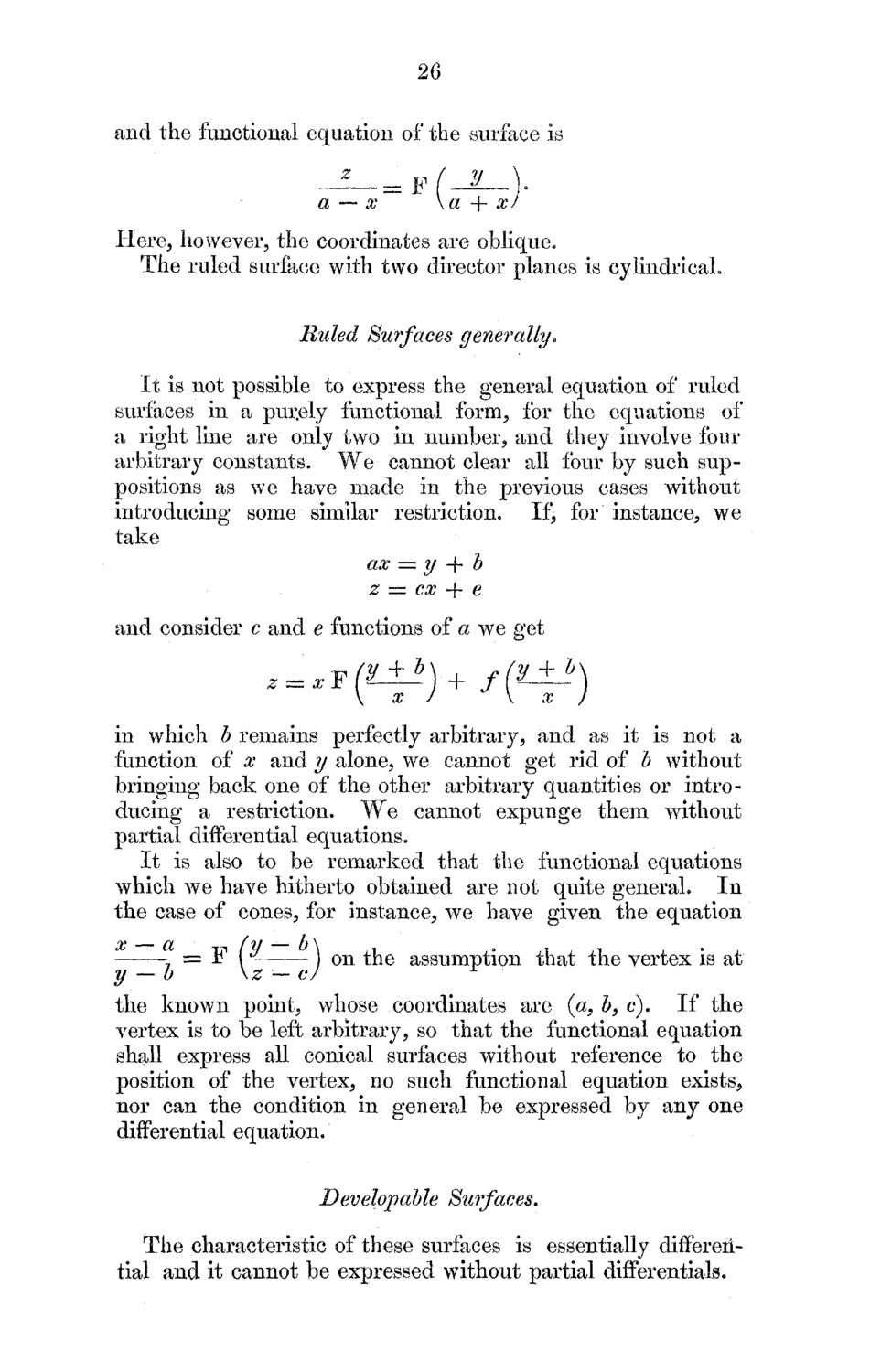| |
| |
Caption: Mathematical Models Catalog of a Collection of Models of Ruled Surfaces
This is a reduced-resolution page image for fast online browsing.

EXTRACTED TEXT FROM PAGE:
26 and the functional equation of the surface is _L_=Ff_iL_). a — x \a -f x/ Here, however, the coordinates are oblique. T h e ruled surface with two director planes is cylindricaL Ruled Surfaces generally. It is not possible to express the general equation of ruled surfaces in a pur.ely functional form, for the equations of a right line are only two in number, and they involve four arbitrary constants. W e cannot clear all four by such suppositions as w e have m a d e in the previous cases without introducing some similar restriction. If, for instance, w e take ax •= y + b z = ex + e and consider c and e functions of a we get in which b remains perfectly arbitrary, and as it is not a function of x and y alone, w e cannot get rid of b without bringing back one of the other arbitrary quantities or introducing a restriction. W e cannot expunge them without partial differential equations. It is also to be remarked that the functional equations which w e have hitherto obtained are not quite general. In the case of cones, for instance, w e have given the equation x —~ a f% i b\ — = F (u~ on the assumption that the vertex is at y — b \z — cJ V the k n o w n point, whose coordinates are {a, b, c). If the vertex is to be left arbitrary, so that the functional equation shall express all conical surfaces without reference to the position of the vertex, no such functional equation exists, nor can the condition in general be expressed by any one differential equation. Developable Surfaces. The characteristic of these surfaces is essentially differential and it cannot be expressed without partial differentials.
| |